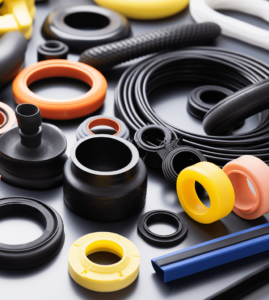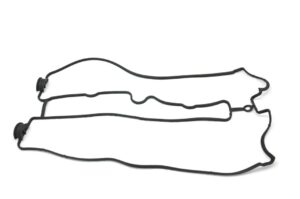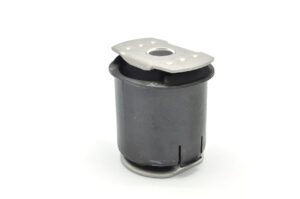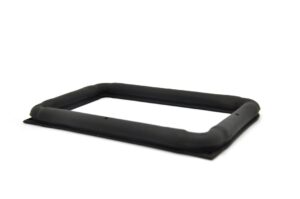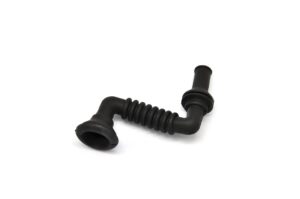Description
Custom Rubber Molded Parts
Custom Rubber Molded Parts: Tailored Solutions for Precision and Performance
Custom rubber molded parts are rubber parts that are designed and manufactured to meet specific customer requirements. They are typically used in applications where standard rubber products are not available or suitable.
At Julong Rubber, we specialize in manufacturing custom rubber molded parts that cater to your exact specifications, offering solutions that enhance performance and meet industry standards.
Key Features and Benefits of Custom Rubber Molded Parts:
- Tailored to Exact Specifications: Custom rubber molding offers the flexibility to create parts that precisely match the design and functional requirements of your application. Whether it's a unique shape, size, or specialized material requirement, custom molding ensures a perfect fit for your needs.
- Versatile Material Options: A wide range of rubber materials can be used in custom molding, including EPDM, Nitrile, Silicone, Neoprene, Viton, and more. Each material offers unique properties, such as heat resistance, oil resistance, flexibility, or chemical resistance, enabling us to select the most appropriate material for your application.
- Cost-Effective Production: Custom rubber molded parts are cost-effective for both low and high-volume production. Once a mold is created, it can be used repeatedly for mass production, reducing the overall cost per unit for large batches. This makes custom rubber parts ideal for applications ranging from prototypes to large-scale manufacturing.
- Precision and Accuracy: Rubber molding processes, such as compression molding, injection molding, and transfer molding, allow for high precision and tight tolerances. This is crucial for parts that need to fit within a system or machinery with minimal clearance, ensuring a proper seal, fit, and functionality.
- Durability and Performance: Rubber molded parts are designed for long-term use, offering resistance to wear, chemicals, UV rays, and extreme temperatures. Whether your part is exposed to harsh industrial environments, automotive systems, or medical devices, custom rubber molded parts ensure that it perform reliably over time.
- Flexible and Complex Shapes: Rubber molding allows the production of parts with intricate designs and geometries that would be difficult or impossible to create using other manufacturing techniques. This flexibility makes it ideal for parts like seals, gaskets, bushings, and other components that require custom configurations.
- Enhanced Safety and Reliability: By ensuring a perfect fit and creating parts from high-quality materials, custom rubber molded components enhance the safety and reliability of the system they are used in. These parts are essential for preventing leaks, reducing wear, and maintaining the integrity of the overall system.
Common Applications of Custom Rubber Molded Parts:
- Automotive Industry: In the automotive industry, custom rubber molded parts are used for seals, gaskets, vibration isolators, bushings, and O-rings. These parts are essential for ensuring that vehicles perform efficiently, maintain fluid integrity, and absorb vibrations.
- Applications: Seals, gaskets, bushings, vibration isolators, weatherstripping, fuel line components, and engine mounts.
- Industrial and Machinery Components: Custom rubber molded parts are widely used in industrial machinery to provide sealing, vibration dampening, and fluid containment. They are also crucial for protecting sensitive components from dirt, moisture, and harsh chemicals.
- Applications: Gaskets, seals, vibration dampers, protective covers, anti-slip pads, washers.
- HVAC Systems: In heating, ventilation, and air conditioning (HVAC) systems, rubber molded parts are used for seals, insulation, and vibration dampening to ensure energy efficiency, noise reduction, and consistent temperature regulation.
- Applications: Seals, vibration isolators, gaskets, flexible hoses, duct connections.
- Medical Devices and Pharmaceutical Equipment: Rubber molded parts are used in medical devices, ensuring airtight seals, flexibility, and safety in environments where hygiene and performance are critical. Silicone rubber, in particular, is widely used for its biocompatibility.
- Applications: Seals for medical devices, gaskets, tubing, diaphragms, surgical components.
- Consumer Electronics: Rubber molded parts are essential in consumer electronics, particularly for sealing components, waterproofing, and shock absorption. Parts such as rubber keypads, covers, and seals provide protection from dust, moisture, and physical damage.
- Applications: Rubber seals, gaskets, waterproofing components, keypads, shock-absorbing materials.
- Food and Beverage Industry: Custom rubber molded parts are used in food and beverage manufacturing to prevent contamination, seal machinery, and ensure proper fluid handling. Materials like EPDM and Silicone are food-safe and suitable for these applications.
- Applications: Seals, gaskets, tubing, hose connectors, food processing equipment parts.
- Aerospace and Military: In aerospace and military applications, rubber molded parts are used for sealing, vibration isolation, and protection against extreme environmental conditions. These components must meet stringent regulations and high-performance standards.
- Applications: Seals, vibration isolators, gaskets, fuel system components, aerospace equipment parts.
Types of Rubber Used:
- Natural Rubber: Offers good tensile strength and elasticity.
- Synthetic Rubber: Such as Neoprene, Nitrile, Silicone, and EPDM, each offering unique properties like oil resistance, temperature resistance, or electrical insulation.
Rubber Molding Processes for Custom Parts:
- Compression Molding: In compression molding, rubber is placed in an open mold cavity, where it is heated and compressed to form the desired shape. This method is ideal for large, simple parts or low-volume production.
- Applications: Large seals, gaskets, and O-rings.
- Injection Molding: Injection molding involves injecting rubber material into a closed mold under high pressure. It is highly efficient for producing parts with complex geometries and tight tolerances in high volumes.
- Applications: Small parts like gaskets, seals, and bushings.
- Transfer Molding: Transfer molding is similar to injection molding, but the rubber material is pre-heated and transferred into a mold cavity under pressure. It is often used for parts requiring precise control over material distribution.
- Applications: Seals, gaskets, and complex molded parts.
- Liquid Silicone Rubber (LSR) Molding: Liquid Silicone Rubber molding involves injecting liquid silicone into a mold cavity and curing it at high temperatures. This process is widely used for applications that require biocompatible materials or high flexibility.
- Applications: Medical devices, food industry parts, and components requiring biocompatibility.
Why Choose Julong Rubber for Custom Rubber Molded Parts?
- Custom Solutions: At Julong Rubber, we specialize in providing custom rubber molded parts designed specifically for your unique application. Whether you require custom shapes, sizes, or materials, we can deliver the perfect solution.
- High-Quality Materials: We offer a wide range of rubber materials, including EPDM, Silicone, Nitrile, Neoprene, Viton, and more. Our team works with you to select the right material based on your specific application requirements, ensuring that the parts perform reliably in your environment.
- Precision Manufacturing: Our rubber molding processes ensure high precision and tight tolerances, providing you with parts that fit perfectly within your system. With advanced molding technologies, we ensure consistent quality and performance.
- Competitive Pricing: With years of experience in rubber molding, we offer cost-effective solutions for both low and high-volume production runs. We aim to provide the best value for your investment, with quality products at competitive prices.
- Global Expertise and Reliability: Julong Rubber has extensive experience in manufacturing custom rubber parts for industries around the world, including automotive, industrial, medical, aerospace, and more. Our commitment to quality and customer satisfaction has made us a trusted supplier to companies worldwide.
Custom rubber molded parts provide the flexibility, durability, and performance needed for various industrial, automotive, medical, and consumer applications. From gaskets and seals to vibration isolators and bushings, rubber molding offers precise, cost-effective solutions for a wide range of complex parts.
At Julong Rubber, we provide tailored solutions, utilizing high-quality materials such as EPDM, Silicone, Nitrile, and Neoprene to meet your exact specifications. Whether you need a single prototype or large-scale production, our advanced molding techniques and engineering expertise ensure that your custom rubber parts meet the highest standards of quality, reliability, and performance.














